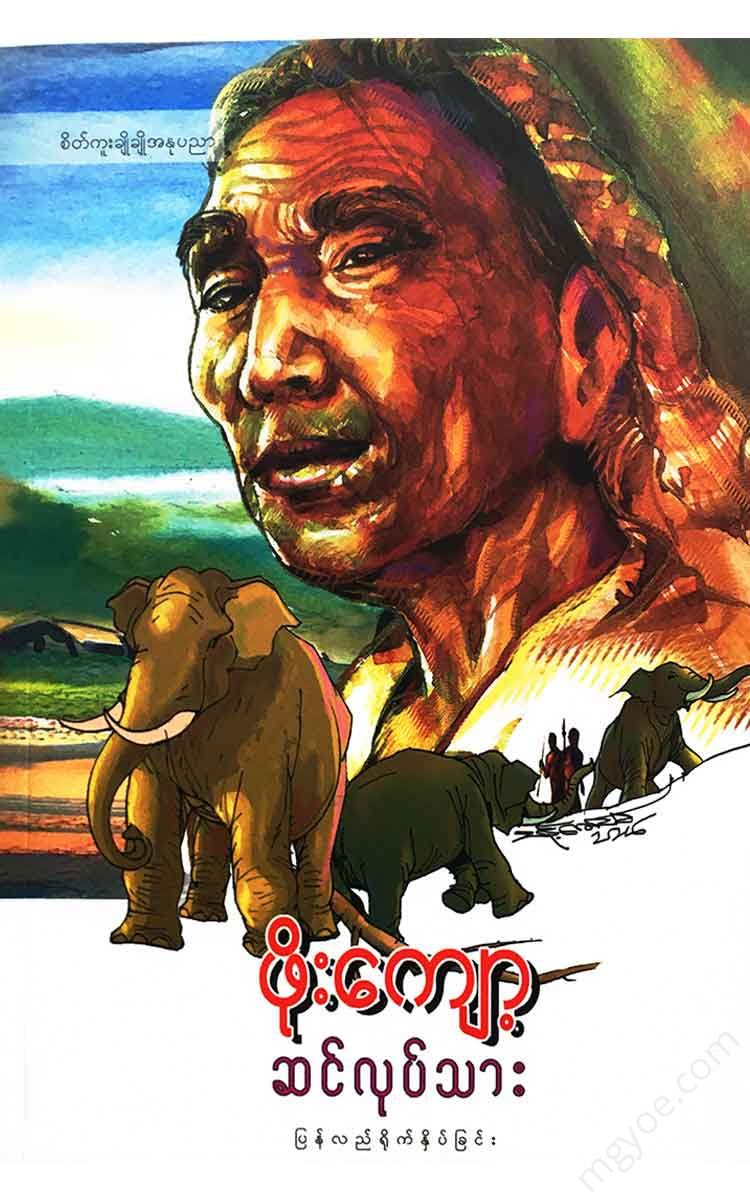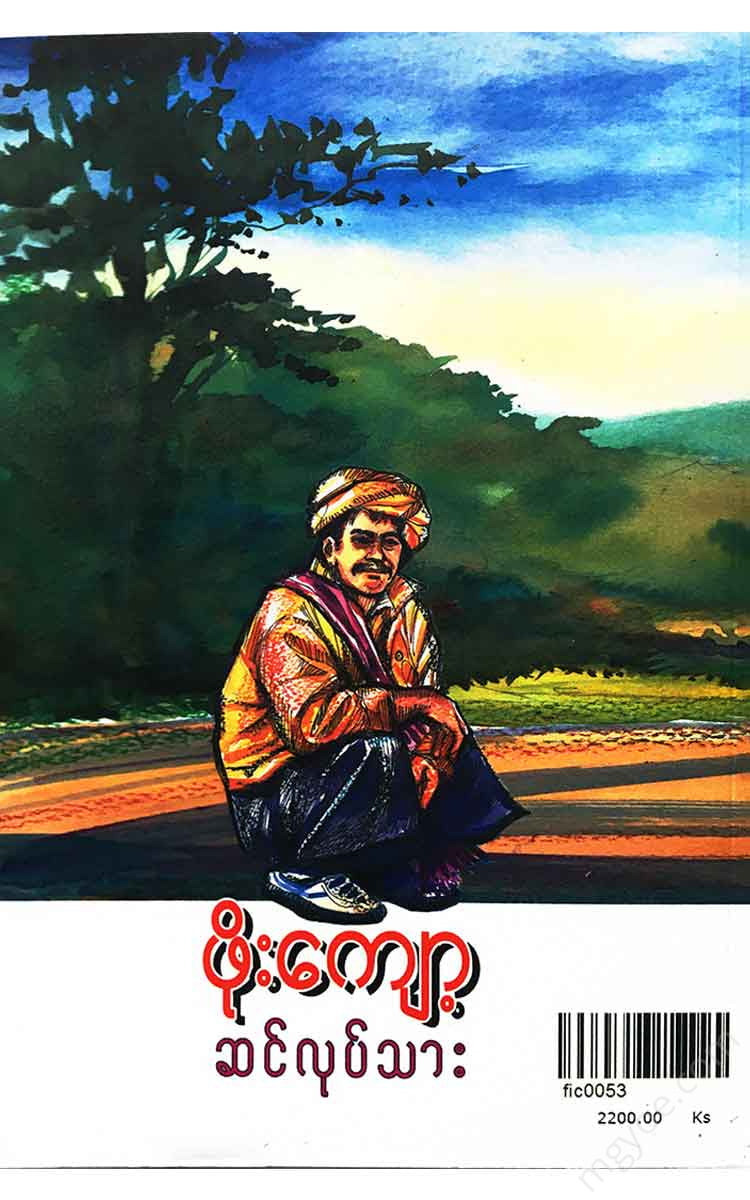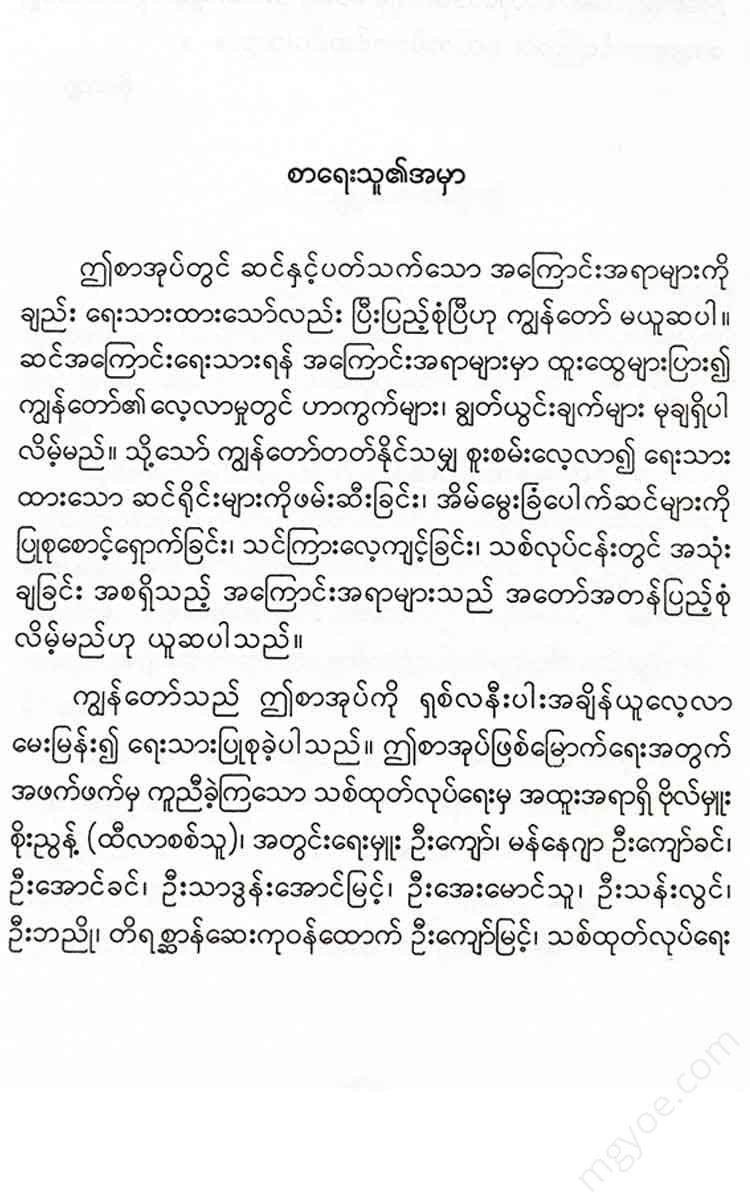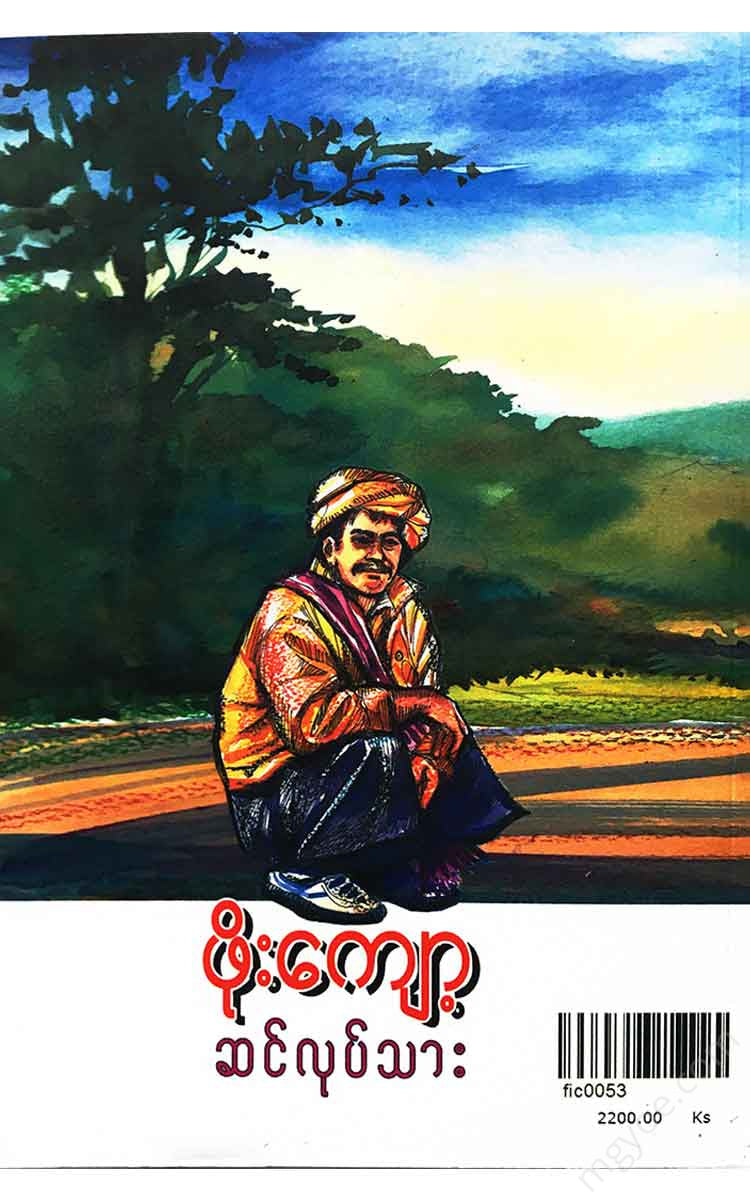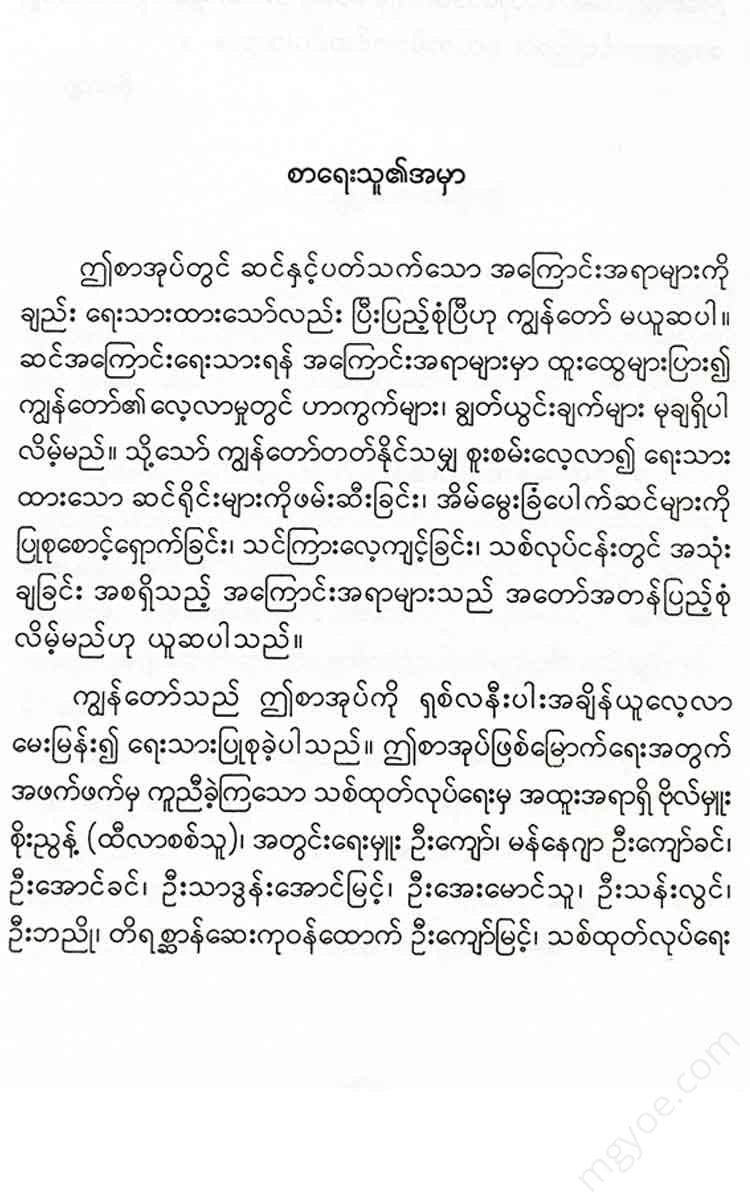စိတ်ကူးချိုချိုစာပေ
Pho Kyawt - Elephant worker
Pho Kyawt - Elephant worker
Couldn't load pickup availability
( 1) Various types of elephants in the world
Since prehistoric times, humans have captured wild animals in various ways and used them for their own benefit in agriculture, livestock, and transportation.
Although human history has changed from one era to the next, the capture of wild animals and their use in commerce, livestock, agriculture, and transportation has continued to this day. Among them, no one can deny that the elephant is the most important animal.
Therefore, all countries in the world know about elephants. Among the land animals, the elephant is the largest, longest-lived, and most docile animal. Among the amazing animals that have survived from ancient times, the elephant is one of the top animals. The amazing animals that have survived from ancient times to the present day are elephants, rhinoceroses, hippos, and camels. Of these, elephants and camels are the most intelligent and beneficial animals to humans. These animals are animals that have emerged naturally, so if we do not study these animals, it will be difficult to understand the animals of the distant past. Therefore, large living animals continue to be important animals in the study of human history.
Looking at these large animals, you will see that elephants were one of the most interesting animals in ancient times, even before the emergence of man. Since elephants were found all over the world in ancient times, it is clear that ancient elephants roamed and lived in a variety of climates as they suited them.
In the past, the "mammal" was a large elephant that roamed from England to the Bering Strait and invaded the Americas. These elephants had thick fur. Therefore, these mammoths could live in cold climates. The mammoths were contemporary with early humans, and their meat was a source of food for humans. The skin was used by humans, and humans carved their tusks. By studying the drawings that early humans made on their tusks, scholars have documented that humans and mammoths competed for world domination.
Geologically, the mammoths disappeared from the face of the earth a long time ago. Their carcasses have been found buried under the icy mud of Siberia and Russia for years.
A man named “Dinbad Klan” fed his guests a mammoth calf that had been buried in the mud for thousands of years. About a hundred years ago, the body of a mammoth was found near the mouth of the Lena River. When it was found, the brain was intact. Except for the eyes protruding from the head, the flesh, fur, and internal organs were intact. Undigested pine shoots from the last meal were also found in the stomach. Siberia was a burial ground for mammoths, and ivory was exported in large quantities. Scientists believe that some of the islands are actually the remains of these elephants.
The list of ancient elephants includes mammoths, mastodons and dinosaurs. Now only the African and Asian elephants remain in the world. Ancient mammoths are said to have been thirteen feet tall. However, the average is only ten feet, which is even shorter than modern elephants. One species of elephant called the "Naba" from India is said to have been sixteen feet tall. This would have made the Naba elephants about four feet taller than the largest modern elephants.
The size of elephants depends on their diet and climate, according to zoologist. Elephants, which belong to the Proboscidean order, range in size from the great white elephant to the stone elephant. Stone elephants, about the size of a Shetland pony, roamed the islands of Malta, Cyprus, and nearby islands during the ice age. At that time, mammoths and duikers roamed North America, along with mammoths. Their skeletons are on display in American museums.
Today, elephants in the world are divided into two groups: Asian elephants and African elephants. The elephants seen in circuses and zoos are usually Asian elephants. The elephants used for logging are also Asian elephants. African elephants are usually not tamed by humans. They are not domesticated enough to be used in human economy, agriculture, or transportation.
There are four species of elephants in Asia: the Indian (or Burmese) elephant, the Ceylonese elephant, the Malayan elephant, and the Sumatran elephant. All four species are named after their country of origin, but they are all similar in appearance, appearance, size, and temperament.
The difference between African and Asian elephants is that Asian elephants have smaller ears than African elephants. Their bodies are smooth and smooth. Their trunks are short and slender. Female Asian elephants do not have tusks. In Ceylon, both males and females are said to be tusks-free. This is said to be due to the food that elephants eat in Ceylon. Therefore, Ceylon elephants cannot do hard work like their Burmese, Indian, Malaysian, and Sumatran counterparts. They can only carry a small load of food.
The African elephant is taller than the Asian elephant. It has larger ears. It has large tusks that run all the way around its trunk. Its tusks are larger and longer. African elephants have not been domesticated because Africans have not tried to domesticate them. They do not have a traditional tradition of working with elephants. African elephants are not built to pull heavy loads like Asian elephants, so they cannot work as hard.
After the war, the British government arranged for some Burmese and Karen elephant hunters to be brought to East Africa to capture and train African elephants, but the extent of the success of this project was never fully known.
It is said that the army of the Carthaginian general Hannibal, who marched from North Africa to attack Rome, Italy, in 218 BC, included 37 elephants.
It is not known what purpose Hannibal used these elephants for. One person who has studied elephants in detail says, “They appear to be Asian elephants, not African ones. There is no tradition of training elephants in Africa, so Hannibal must have used tamed elephants from India.”
Ancient Indian kings, like the ancient Burmese kings, used thousands of elephants in battle. When besieging enemy cities, elephants were very useful in breaking down city walls and fortifications. However, elephants injured in battle could not be controlled or tamed, and would often trample their own troops and cause harm.
Marco Polo described in his account how the Burmese were in disarray and suffered a crushing defeat in the Sino-Burmese Battle of Nga Saung Chan due to the enemy's arrows raining down on them and wounding their elephants.
In India, where elephants once roamed the earth, elephants are now disappearing. It can be said that Myanmar is the country in the world that uses elephants the most for the benefit of everyone. Therefore, in Myanmar, elephants have been raised, captured, tamed, and used mainly in the timber industry, not only in the past but also now.
